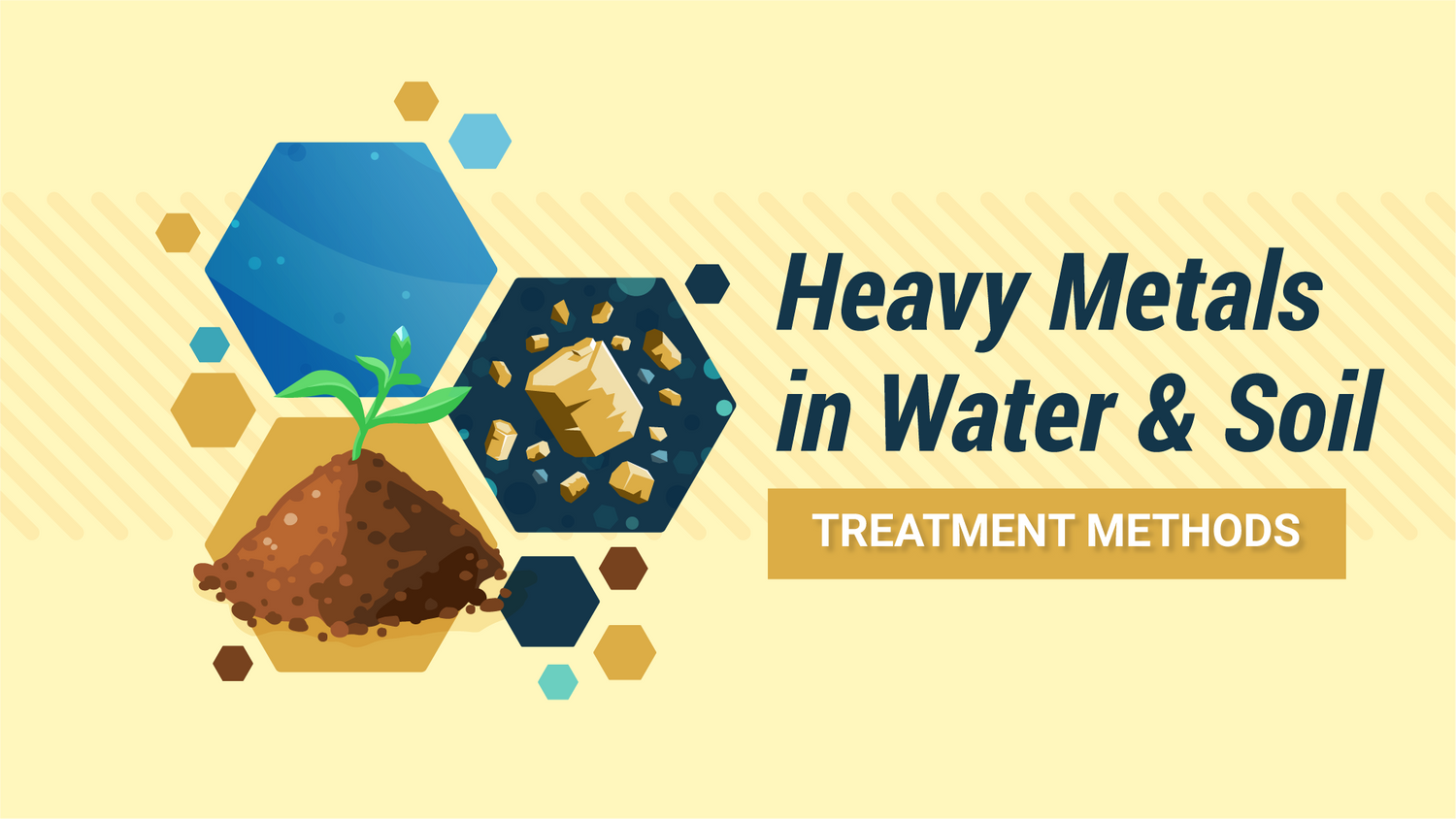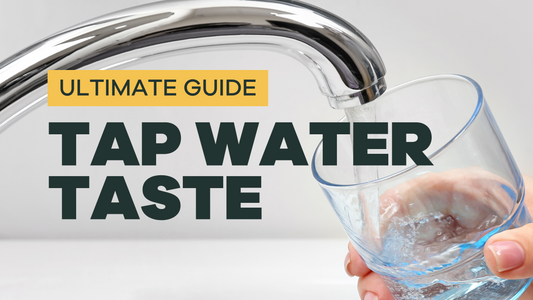
Heavy Metals in Water and Soil: Methods for Treatment
Our blog is written by real experts— not AI. Each guide is carefully reviewed and updated based on the latest research. Plus, with no affiliate links, you can count on unbiased insights you can trust.
There are many methods available for reducing heavy metals in water–before they enter our food and bodies. Conventional engineered treatment methods such as reverse osmosis, ion exchange, and chemical precipitation have been in use for a while, but there are also some emerging technologies that utilize the natural power of plants to take up heavy metals directly from the environment. Some of these technologies can only be used at treatment plants, while some of them are more consumer friendly and can be used at home. We review them both, below.
Conventional Engineered Treatment Methods to Remove Heavy Metals
Reverse Osmosis to Remove Metals from Water
Used For: (1) At home water treatment for city and well water and (2) water treatment plants. [2]
Reverse osmosis (RO) can be used to reduce many heavy metals in water, such as chromium, copper, lead, and arsenic. RO technology uses added pressure to push water through a semipermeable membrane, which blocks contaminants larger than 0.0001 micrometers from passing through while allowing water molecules free passage. Read more about how RO systems work.
Removal rates depend on several factors including the post- and pre-treatment steps, but RO removal efficiencies are high for metals, with upwards of 99.4% removal for metals like cadmium and copper.[3] Though reverse osmosis is a very effective method, it is expensive (systems cost anywhere from $150-$1000) and creates a high volume of wastewater. Not only will this likely increase your water bill (by about $50/month), but the wastewater stream contains a high concentration of contaminants can harm the environment if not properly disposed of.[4]
Ion Exchange to Remove Metals from Water
Used For: (1) At home water treatment for city and well water and (2) water treatment plants.
Ion exchange is another common heavy metal treatment method, which can reduce nickel, mercury, lead, cadmium, chromium, and copper in water.[5] When water passes through an ion exchange resin, heavy metal ions are attracted to the resin surface and easily swap places with harmless ions like chloride, making the discharge water safe to drink and use for irrigation.[5] Read more about how ion exchange systems work.
As with all technologies, ion exchange has some drawbacks–it requires diligent cleaning (through backwash and brine regeneration) of the resin to work properly, it cannot handle highly concentrated metal solutions, it is not selective to heavy metals, and it is sensitive to your water’s pH. Ion exchange resins being “non-selective” means that they can also filter out beneficial ions in water such as minerals, like calcium and magnesium, that impart a pleasant taste to your drinking water and contribute to your required daily intake of these minerals (though the majority of your intake of these minerals is typically via food consumption).[6]
Chemical Precipitation to Remove Metals from Water
Used For: Water treatment plants
Chemical precipitation is one of the most widely used methods for heavy metal removal.[7] Contaminated water is mixed with a chemical solution, often containing lime, that reacts with the heavy metal ions. This causes the heavy metals to precipitate into solids. The precipitate is then large enough to filter out, and the heavy metal removal is complete!
Chemical precipitation is well established and low maintenance, but also creates concentrated wastewater sludge and can require complicated chemical dosing.[8]
Plant-based Methods to Remove Heavy Metals
Phytoremediation to Remove Metals from Water and Soil
Used For: (1) Water treatment plants and (2) soil remediation projects
Phytoremediation encompasses any method that uses plants to remove contaminants from soil or water. It is more affordable and more environmentally friendly than conventional engineered treatment methods because it does not create concentrated wastewater sludge that can harm ecosystems.
Engineered wetlands are an example of phytoremediation in action: water passes through and sits in wetlands while contaminants collect on the floor of the wetland and get taken up by plants.[9]
However, phytoremediation is time consuming, limited by the age of the plant, root depth, level of contamination, weather conditions, etc, and there still exists a concern for proper contaminated plant disposal.
A few phytoremediation methods include:[10]
- Phytoextraction and phytovolatilization: Phytoextraction refers to plants’ ability to uptake heavy metals via their roots and transport them to the above ground parts of the plant, called shoots. The shoots can then be burned to both generate energy and extract heavy metals from the ash to be recycled. Or, in the case of phytovolatilization, the heavy metals are converted into volatile forms and released into the atmosphere.
- Phytostabilization: Certain plant species can immobilize heavy metals present in soil and groundwater in their roots or within their rhizospheres (the root zone, which includes beneficial fungi and other microbiological organisms). Once the heavy metals have been stabilized either on the plant’s roots or in the soil, they can no longer move throughout the soil or be swept away by erosion.
What About Contaminated Soil at Home?
Phytoremediation requires expertise to ensure that the correct plant species is being used and that contaminants are being removed effectively. At home, you’ll need a simpler approach–but you’ll want to know what’s in your soil first. Soil testing is an essential first step to understanding what is in your soil.
If you find you have soil contaminated with heavy metals, there are a few simple methods you can use to address the problem.[11] You can create raised beds for your crops that are above the contaminated soil, or you can add a thick layer of organic material such as mulch or compost on top of your soil to create a physical barrier from the contamination. These techniques will not remove the heavy metals (like phytoremediation would), rather they will prevent you (and your plants) from making contact with the metals.
Essential Home Water Test
Basic testing panel for water utility customers or private well owners concerned primarily by metals, bacteria, aging pipes, and infrastructure.
Advanced Home Water Test
Ideal baseline for testing tap water provided by a water utility utilizing chlorine disinfection or a private well near areas of heavy agriculture or industry. Test your drinking water for some of the most common concerns found in tap water.
Most water and soil treatment happens behind the scenes at treatment plants and soil remediation projects–but some of these methods are applicable at home. At Tap Score, we mostly focus on helping people protect themselves from heavy metals by providing advanced laboratory tests for water and soil, so people can get a sense of what you’re dealing with and what type of treatment may be appropriate for their situation. More questions? Drop our team a line any time at support@mytapscore.com.
Read More
▾7 Heavy Metals Everyone Should Test For – SimpleLab Tap Score
Heavy Metals And Bioaccumulation: What You Need to Know
Top 5 Most Popular Water Filtration Technologies For Homes
What Is Reverse Osmosis (RO)? – SimpleLab Tap Score
How Does Ion Exchange Work? – SimpleLab Tap Score
Sources and References
▾- Heavy Metals Toxicity and the Environment - PMC
- Technical Information on Home Water Treatment Technologies | Home Water Treatment | Drinking Water | Healthy Water | CDC
- Removal of heavy metals from wastewater by membrane processes: a comparative study - ScienceDirect
- Average monthly cost of water United States 2019 | Statista
- Review Article: new trends in removing heavy metals from industrial wastewater
- Choosing Home Water Filters & Other Water Treatment Systems | Drinking Water | Healthy Water | CDC
- [PDF] Methods of Removing Heavy Metals from Industrial Wastewater | Semantic Scholar
- Wastewater Technology Fact Sheet Chemical Precipitation
- Constructed Wetlands | US EPA
- A Review on Heavy Metals (As, Pb, and Hg) Uptake by Plants through Phytoremediation
- Growing Gardens in Urban Soils









